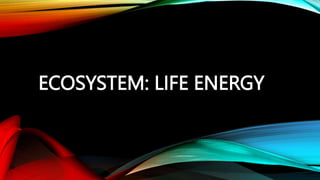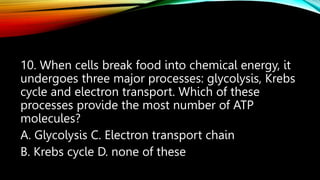This document teaches about photosynthesis and respiration, emphasizing the functions and structures involved in these processes. It outlines learning objectives, quiz questions, and detailed descriptions of the stages of photosynthesis (light-dependent and light-independent reactions) and cellular respiration (glycolysis, Krebs cycle, and electron transport chain). Overall, it illustrates how plants produce energy from sunlight and how cells convert stored energy from food into usable ATP.
















































































